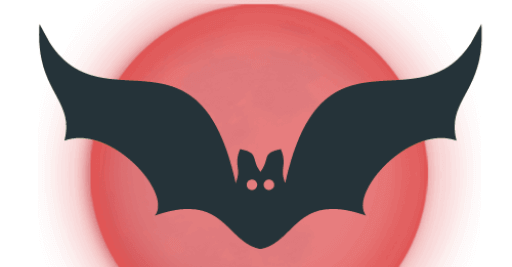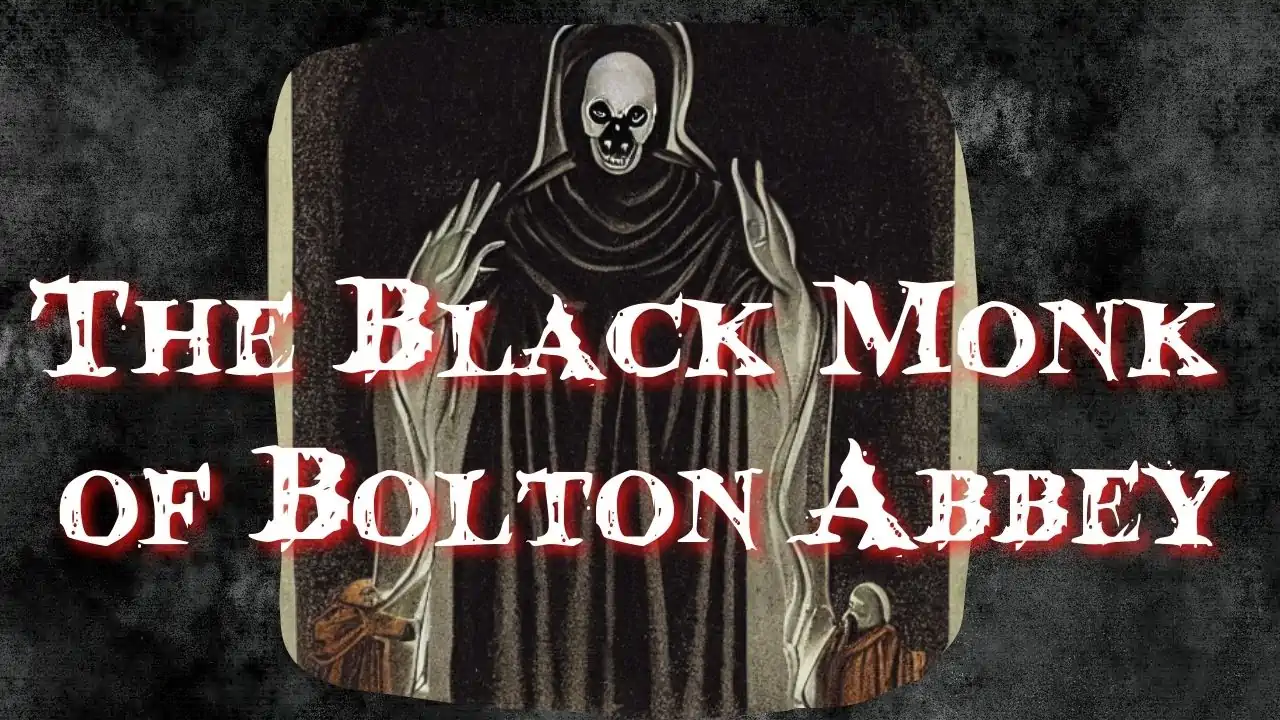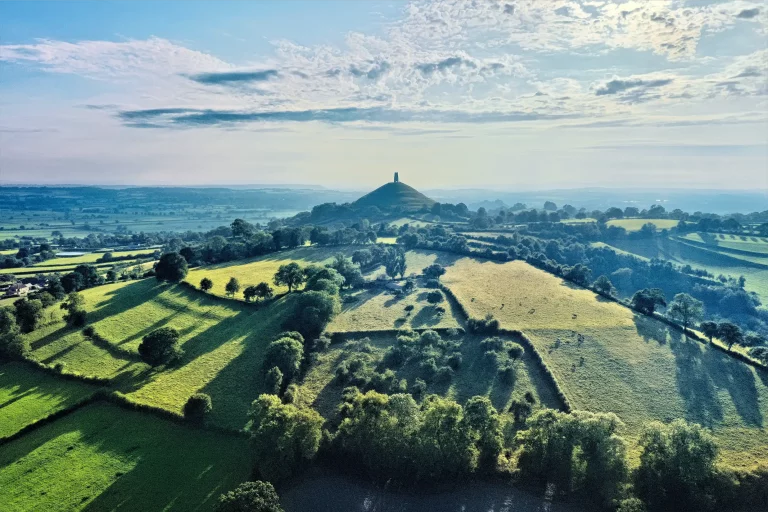The Black Monk Ghost of Bolton Abbey
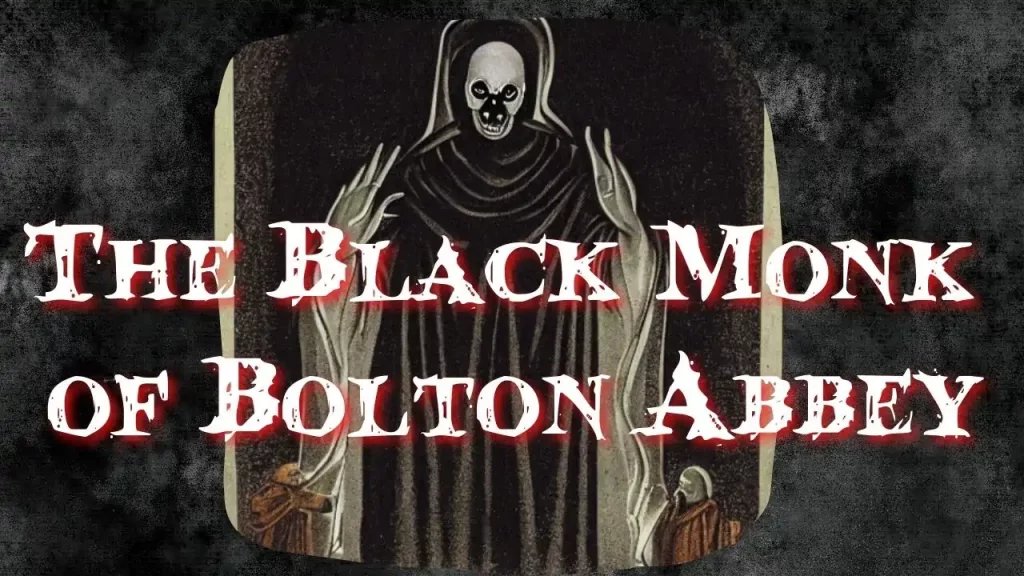
What is the tale of the ghost of Bolton Abbey? In August 1912, King George V was guest of his friend the Duke of Devonshire, Victor Cavendish, and Lord Desborough for the grouse shooting up at the Duke’s house at Bolton Abbey, five miles west of Skipton in Yorkshire.
The grouse shooting season in the UK, starts on the ‘Glorious’ 12th of August.
Also staying was the Duke of Devonshire’s son, Edward Cavendish, the Marquess of Hartington, who was a schoolboy at the famous public school Eton, but down for the holidays and staying in Yorkshire.
Perhaps because the King and his part were staying in the main part of Bolton Hall, the Marquess of Hartington was lodging with the Rector in the nearby rectory.
The Letters of The Marquess of Hartington About The Ghost of Bolton Abbey
It was the young 17-year-old Marquess of Hartington, Edward Cavendish, home for the holidays, staying in the Rectory who saw the ghost. He wrote down his account which was signed as authentic by the King, the Duke and the Baron.
First Letter
On Sunday, 18th, August, 1912, ongoing up to my room at the rectory at 11:15 PM, I distinctly saw a figure standing at the door. It was dressed in nondescript clothes and was more or less clean shaven.
I was at the top of the staircase, looking down the passage in which mine was the end room. I went downstairs again and fetched another light, but on going up again, the figure had disappeared.
The ghost had been the subject of conversation that evening at which I had not been present. And I was not thinking of it.
Signed Hartington.
The Second Letter
The second document is a letter from the Marquess of Huntington’s mother to Lord Halifax.
Will you tell Lord Halifax at Eddie [the Marquess of Huntington] will send him an account of his ghost?
He seems to be the same man who was seen two or three times by the Vicar. But the Vicar’s ghost wore a brown dress and Eddie declared this man’s was dark grey or black. Eddie’s ghost had a round face. No beard. But what he described as a rough face. When we asked the Vicar afterwards if his ghost had a beard, he said, ‘No’, but that he looked as if he had not shaved for four or five days. And his face was very round.
The Third Letter
The third letter was sent to Lord Halifax by the Marquess of Huntington himself.
I saw the ghost standing in the door of my room, looking not at, but past me at 11:15 PM on the Sunday, August 18th. I was sleeping at the Rectory, and I saw him when I turned left-handed from the stairs, which are in three flights and looked down the passage, some 11 yards long. At the end of which is the door of my room.
When I was going up the last flight, which consists only of six steps, I thought someone was there, but attached no importance to this. As the Rector often met me on the stairs. I thought at once that it was the ghost. But was not frightened of him until afterwards. He was below the middle height and seemed to be a man of 65 or so.
His face was unusually round or rather broad in proportion to its length. And it was very heavily lined and wrinkled. The eyes were bright and the face might have been that of an old woman, but for the fact that there was about a week’s growth of greyish stubble on the chin. There was a hood over the head and he was dressed in a long garment, like a dressing gown.
The hood and the shoulders seem to be grey, but lower down the colour was black or brown. The light was behind me and I had a candle in my hand, so that his head and shoulders were fairly brightly lighted while lower down he was in shadow. The Phantom was not at all transparent, but solid and real.
The wall of the room in which the Marquess slept was in fact, part of the wall of an old priory that had been erected on this site. The Vicar to whom the Marquess of Huntington’s mother alludes. Reverend Mr. McNabb saw the phenomenon only twice. It was standing in the same position when it was seen by the Marquess and seemed so real that the Vicar challenged him for trespassing.
Then it disappeared. It has apparently been seen by others in more recent years.
Seeing the flying Dutchman is said to bring a curse, and this is what happened to this poor sailor.
The Characters
The Marquess of Hartington
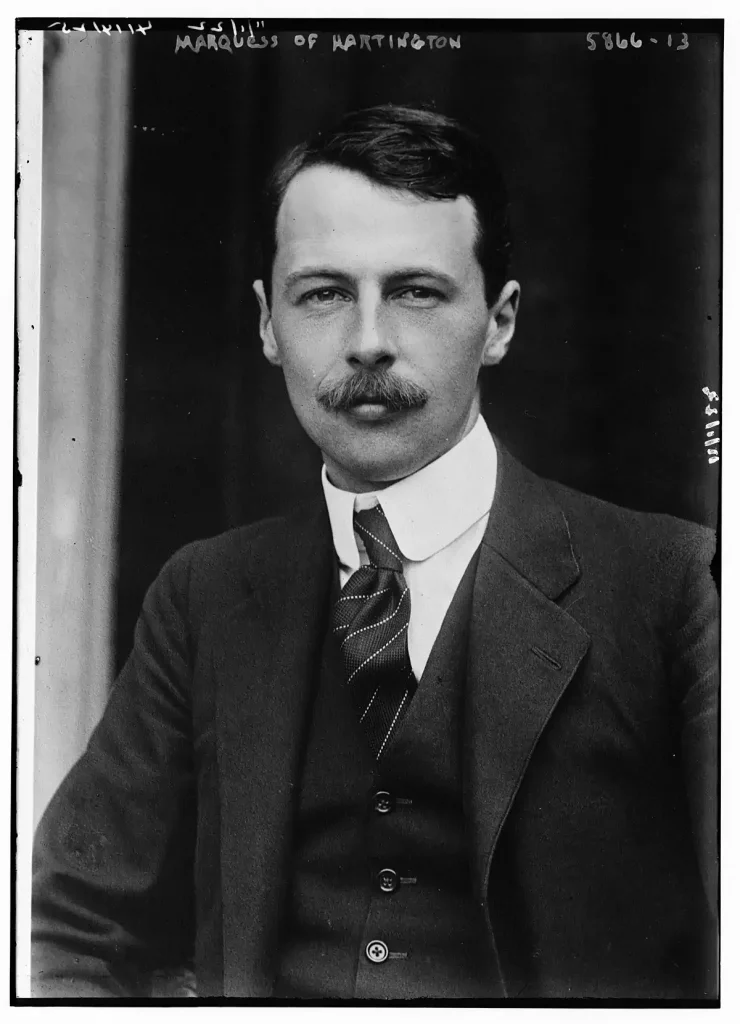
The Marquess of Hartington became 10th Duke of Devonshire after his father’s death, but died of a heart attack aged only 55 in the presence of serial killer John Bodkin Adams who was a GP who murdered his patients.
Reverend McNabb
The rector was Reverend James Frederick McNabb who was Rector of Bolton Abbey from 1903. Rev. McNabb was a Yorkshireman, born not far away in Keighley and in 1912 he was 48. We know this independently from the 1911 Census.
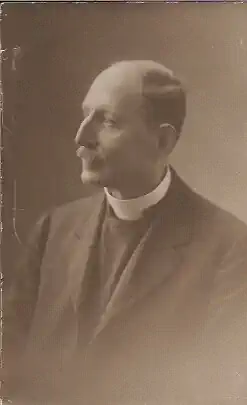
King George V
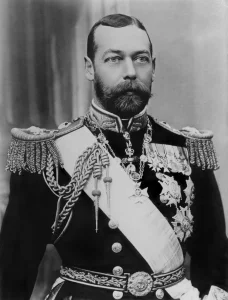
There is no record of King George commenting on the ghost sighting, though he, and the Duke of Devonshire, and Lord Desborough all put their signature to the young Marquess of Hartington’s account.
But King George V had one sighting of a ghost which came from his time as a young man in the Royal Navy.
George V was great grandfather of King Charles III and grandson of Queen Victoria.
On July the 11th in 1881. He was on HMS Inconstant, somewhere in the Bass Strait between Melbourne and Sydney in Australia.
And this is what he wrote in the log of the HMS Inconstant from 1881:
“July 11th. At 4 a.m. the Flying Dutchman crossed our bows. A strange red light as of a phantom ship all aglow, in the midst of which light the masts, spars and sails of a brig 200 yards distant stood out in strong relief as she came up on the port bow, where also the officer of the watch from the bridge clearly saw her, as did the quarterdeck midshipman, who was sent forward at once to the forecastle; but on arriving there was no vestige nor any sign whatever of any material ship was to be seen either near or right away to the horizon, the night being clear and the sea calm.
“Thirteen persons altogether saw her … At 10.45 a.m. the ordinary seaman who had this morning reported the Flying Dutchman fell from the foretopmast crosstrees on to the topgallant forecastle and was smashed to atoms.”
Lord Grenfell
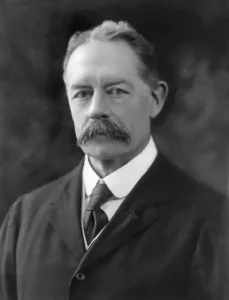
William Grenfell, 1st Baron Desborough was a life peer, that is his title was created from him and related to the Desborough Hundred around Taplow in Buckinghamshire where he was born.
Before he was a Lord, William Grenfell entered parliament 1885, but after losing his seat, went to the Sudan in 1888, a special correspondent for The Daily Telegraph. He returned to parliament in 1892 as a Liberal for Hereford city, but resigned in 1893 for refusing to support Irish home rule. Then later on came back to parliament in 1904 for South Buckinghamshire as a Conservative, and he was raised to the peerage in 1905, taking the title of Baron Desborough of Taplow.
His house still stands but is now a Buddhist Monastery.
The Duke of Devonshire
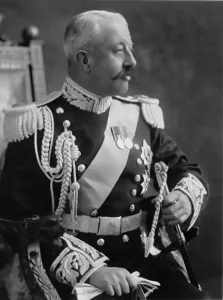
The Ninth Duke of Devonshire, young Edward Cavendish’s father, was Victor Cavendish, who inherited the Dukedom on the death of his childless uncle.
He was born in 1868 and died in 1938. He served as Governor General of Canada and was appointed as such in 1916 by king George V. Clearly; he was a friend of the King’s.
About Bolton Abbey
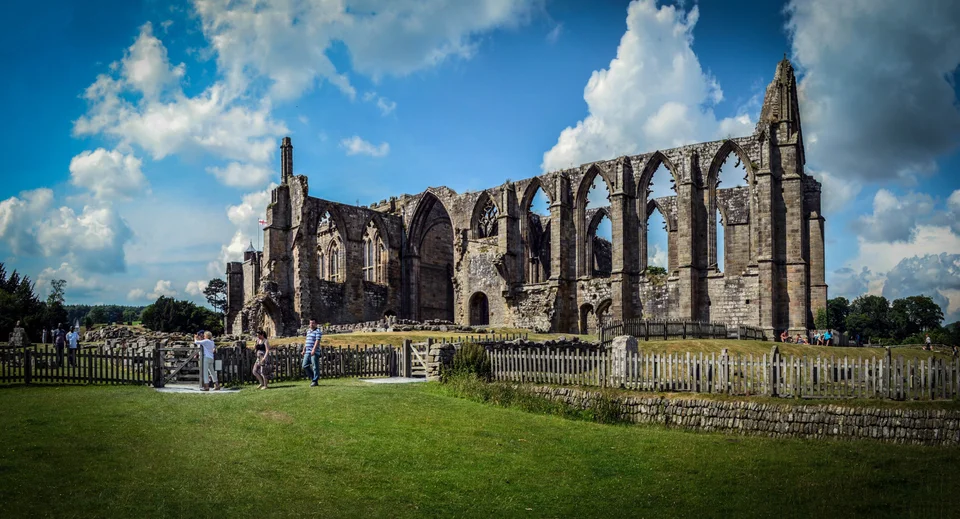
Bolton Abbey lies five miles east of Skipton. The village takes its name from the ruins of the 12th century. Augustinian monastery now known as Bolton Priory.
In 1120, the monastery was set up at Embsay. Even though its name is “Abbey,” Bolton Abbey was actually a priory. It was started in 1154 by the Augustinian order on the banks of the River Wharfe. In 1154, Lady Alice de Romille of Skipton Castle gave the order land in Bolton.
In 1154, Lady Alice de Romille of Skipton Castle gave the order land in Bolton
In the early 1300s, Scottish raiders caused the site to be abandoned for a while and did a lot of damage to the priory.
The nave of the abbey church was used as a parish church starting around 1170, and it was still there after the monasteries were closed.
When the monasteries were closed down in January 1540 as part of the Dissolution of the Monasteries, the abbey was still being built.
The eastern part is still in ruins. The top half of a tower that was started in 1520 was left standing, and its base was later turned into a porch and given a bell tower.
The ruins were sold to the Clifford family.
Most of the church that is still standing was built in the Gothic style, but more work was done on it during the Victorian era. August Pugin designed some windows that are still there. It is still a church, and services are held there on Sundays and religious holidays.
The Ghost of The Black Monk of Bolton Abbey
It has been reported that during early evening and at night, the echoing sounds of footsteps can be heard around the rectory. These are thought to be the sounds of a Phantom Canon wandering his old home at Canon.
It is said that the soul of the black Canon will haunt the buildings of the priory forever, unable to rest. We need to be clear the priory and Bolton Hall are not the same building.
The ruins of Bolton Priory are a brief walk of about a hundred yards. To the hall at Bolton Abbey which is the Cavendish’s house.
It seems very possible, then that the Black Monk could have a little walk between the buildings.
Lord Halifax’s Ghost Book
The account of the ghost is in Lord Halifax’s Ghost Book he kept as a personal project and that was published by his son Edward, Viscount Halifax in 1936.
The first edition is worth £350, but I tracked down an ebook copy. The ghost of Bolton Abbey is only one of many first-hand accounts collected by Lord Halifax.
This is from the preface:
As long as I can remember, my father’s Ghost Book was one of the most distinctive associations of Hickleton. He kept it always with great care himself, from time to time making additions to it in his own hand-writing, and bringing it out on special occasions such as Christmas to read some of the particular favourites aloud before we all went to bed. Many is the time that after such an evening we children would hurry upstairs, feeling that the distance between the Library and our nurseries, dimly lit by oil lamps and full of shadows, was a danger area where we would not willingly go alone, and where it was unsafe to dawdle.
Such treatment of young nerves, even in those days, would not have been everybody’s prescription; and I well recollect my mother protesting—though I believe almost invariably to no effect—against ‘the children being frightened too much’. My father, however, used to justify the method as calculated to stimulate the imagination, and the victims themselves, fascinated and spell-bound by a sense of delicious terror, never failed to ask for more.
I have often wondered what really underlay the attraction that Ghost stories and the like held for my father, leading them to fill so not inconsiderable a place in the background of all our life with him as children. They appealed strongly to his natural sense of mystery and romance, which so largely dictated his scale of values in the appraisement of persons and things.
Viscount Halifax, 1936
Conclusion: Was The Ghost of Bolton Abbey A True Sighting?
I believe that the young Marquess of Huntington saw the ghost. He even got the King to put his name to it, and the King clearly believed him. Furthermore, the rector Rev. McNabb had also seen the ghost.
The young Marquess made a false supposition that convinces me even more that he saw the ghost of an Augustinian Friar from the days before the Dissolution of the Monasteries.
I have the benefit of the internet, which of course Lord Hartington didn’t have in 1912.
The National Gallery has a site which gives details of which colours different monks wore so that you can identify them correctly in the pictures.
It says is that the Augustinian Hermits wore white habits, but the Augustinian friars who were Bolton Abbey wore a black habit and a white surplice.
If Lord Hartington were making this up, he would have been more likely to confirm the presumption this was an Augustinian from the nearby Priory. But his eyewitness account, seems to him, to debar this. However, he was wrong and what he saw was the correct garb despite what he thought.
And further to this, I dug up another sighting. And this is in the Craven Herald and Pioneer, the local paper.
This report says:
50 YEARS ago, on July 18, 1969, the Herald reported on the ‘spirit’ of Bolton Abbey’s Rectory and Priory. The spirit had been seen twice in the last month by the then Rector, the Rev Frederick Griffith Griffiths, and also his 20-year-old daughter, Lynn. They saw the spirit disappear around a corner of the Rectory, and the Rector also saw a figure in the house window, but when he looked, there was nobody there.
So I am convinced that the ghost of Bolton Abbey is real.
Hope you enjoyed that as much as I enjoyed digging it out.
Related Posts You Might Enjoy:
The True Story of the Cheltenham Poltergeist
Ghostly Events At Hinton Manor
